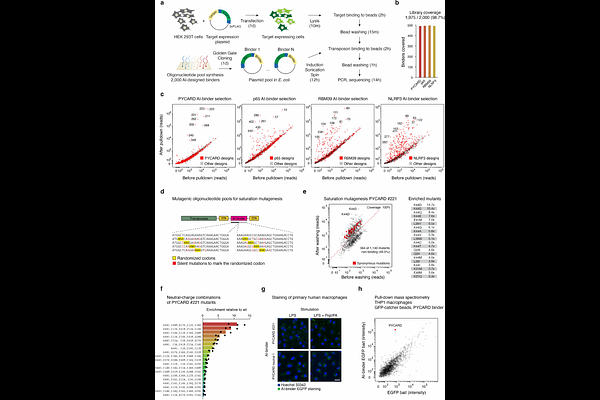Transposon-Display of AI-designed binders enables manipulation of the proteome in human cells

Transposon-Display of AI-designed binders enables manipulation of the proteome in human cells
Hoch, A.; Fandrey, C. I.; Coventry, B.; Virreira Winter, S.; Geyer, P. E.; Kempchen, T. N.; Ebert, T. S.; Hoelzel, M.; Baker, D.; Schmid-Burgk, J. L.
AbstractTransposon-Display is a highly scalable screening method that links proteins to their encoding DNA during expression in E. coli via a mutant transposase. Leveraging this system, we identified AI-designed binders targeting four intracellular human proteins, saturation-mutagenized top candidates, and charge-balanced variants to improve compatibility with the intracellular environment while preserving target binding. The resulting neutral binders can be fused to EGFP allowing antibody-free intracellular staining. Expressing neutral binders in human cells as fusions with functional domains can drive small molecule-controlled protein aggregation and trigger proteasomal degradation of endogenous target proteins in living cells. Manipulating the proteome of living cells using libraries of AI-designed binders may provide a new avenue to screen for disease-relevant protein functions and large-scale functional data may help to refine protein design algorithms.